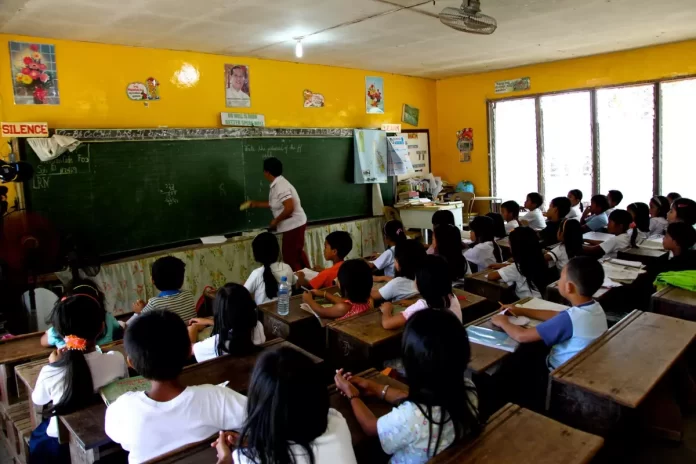Education is a vital part of any society as it provides the knowledge and skills needed to succeed in life. The Philippines has a long history of valuing education with the government allocating a significant portion of the budget to education. There are still challenges in the Philippine education system that need to be addressed. We will compare the Philippine education system with those of other countries and examine the strengths and weaknesses of each system.
Structure and Funding
The Philippine education system exhibits distinctive characteristics in its structure, funding, and governance when compared to other countries. It is predominantly funded by the government but private schools also play a significant role. The government has recently implemented several changes to the structure of the education system which includes K-12 programs that are aimed at improving the quality of education. Comparing the funding and governance structure with other countries can provide insights on how to further enhance the quality of education in the Philippines.
Curriculum and Standards
The Philippine curriculum and standards have been developed to meet the needs of Filipino students. However, there are concerns about the quality and relevance of the curriculum particularly in relation to global standards. Comparing the curriculum and standards of other countries can provide ideas for improvement and highlight the strengths and weaknesses of the Philippine education system.
Teaching and Learning Approaches
The teaching and learning approaches in the Philippines vary with some schools implementing innovative methods while others continue to rely on traditional methods. Learning from other countries’ innovative teaching methods can provide insights into how the Philippine education system can improve its teaching approaches to better meet the needs of Filipino students.
Assessment and Evaluation
The Philippine education system has undergone significant changes in recent years regarding student assessment and evaluation. However, there is still room for improvement, particularly in terms of accuracy and fairness. Studying other countries’ assessment and evaluation systems can provide a better understanding of how the Philippine system can improve its assessment practices.
Outcomes and Achievements
The academic outcomes and accomplishments of students in the Philippines hold significant importance as a measure of the effectiveness of the education system. Comparing the outcomes and achievements of Philippine students with those of other countries can provide insights into the strengths and weaknesses of the Philippine education system and identify areas that require improvement.
Conclusion
The Philippine education system has its strengths and weaknesses when compared with those of other countries. The country has a strong commitment to education with significant government investment in the sector. However, there are still challenges to be addressed such as improving the quality of teachers and addressing the achievement gap between urban and rural areas, and promoting innovation in the curriculum. The Philippine education system can continue to improve and provide better opportunities for students to succeed through learning from the experiences of other countries and implementing best practices.
Frequently Asked Questions
How does the Philippine education system differ from other countries?
The Philippine education system has unique features that distinguish it from other countries such as a 10-year basic education cycle consisting of six years of primary education and four years of junior high school. The curriculum is centralized with a focus on core subjects, unlike other countries that have more decentralized systems. There is also a heavy emphasis on English language proficiency in the Philippines.
What are the strengths and weaknesses of the Philippine education system?
Strengths:
- High literacy rates
- Strong emphasis on English language proficiency
- Good performance in certain subjects such as math and science in international assessments
- Increasing access to education, particularly at the primary level
- A diverse and culturally rich educational system
Weaknesses:
- Limited access to education in certain regions and for marginalized groups
- Poor funding and inadequate resources for many schools and universities
- Outdated curriculum and lack of emphasis on critical thinking and creativity
- Inadequate teacher training and low salaries lead to a shortage of qualified teachers
- High drop-out rates and low completion rates at the secondary and tertiary levels
- A mismatch between skills acquired in education and skills needed in the job market.
Are there any innovative teaching methods being used in other countries that the Philippine education system can adopt?
Actually, there are many innovative teaching methods being used in other countries that can be adopted by the Philippine education system. Some countries have introduced project-based learning where students work on real-world projects that integrate different subjects and skills. Others have embraced technology-based learning, such as using virtual and augmented reality to enhance students’ understanding of complex concepts. Some countries also prioritize experiential learning such as outdoor education or field trips, to provide students with hands-on learning experiences. The education system can offer more engaging and effective learning experiences for students by exploring these approaches and adapting them to the Philippine context.
How are students assessed and evaluated in the Philippine education system compared to other countries?
The students are evaluated through various means such as written tests, oral exams, projects, and performance tasks. The system generally places a high emphasis on academic performance and standardized testing, with national exams such as the National Achievement Test (NAT) and the College Entrance Examination (CEE) serving as important indicators of a student’s academic standing.
One weakness of this system is that it may not fully capture a student’s overall performance and potential, as some students may excel in areas that are not traditionally evaluated in a standardized test format. The heavy reliance on exams and grades may lead to a focus on rote memorization and test-taking skills rather than fostering critical thinking and problem-solving abilities.
To address these weaknesses, some schools and educators in the Philippines are exploring alternative forms of assessment such as project-based learning and portfolio assessments which aim to provide a more holistic view of a student’s skills and knowledge. These approaches may also encourage students to be more engaged in their learning and develop essential 21st-century skills such as collaboration, creativity, and communication.
How can the Philippine education system improve its outcomes and achievements?
- Enhancing the quality of classroom teaching by investing in teacher training and development.
- Ensuring the curriculum and standards remain relevant and aligned with the needs of the global workforce through regular updates.
- Improving the learning experience by increasing access to technology and educational resources.
- Developing critical thinking and problem-solving skills through more opportunities for experiential and project-based learning.
- Promoting collaboration between schools, universities, and industry to facilitate a smooth transition from education to employment.










